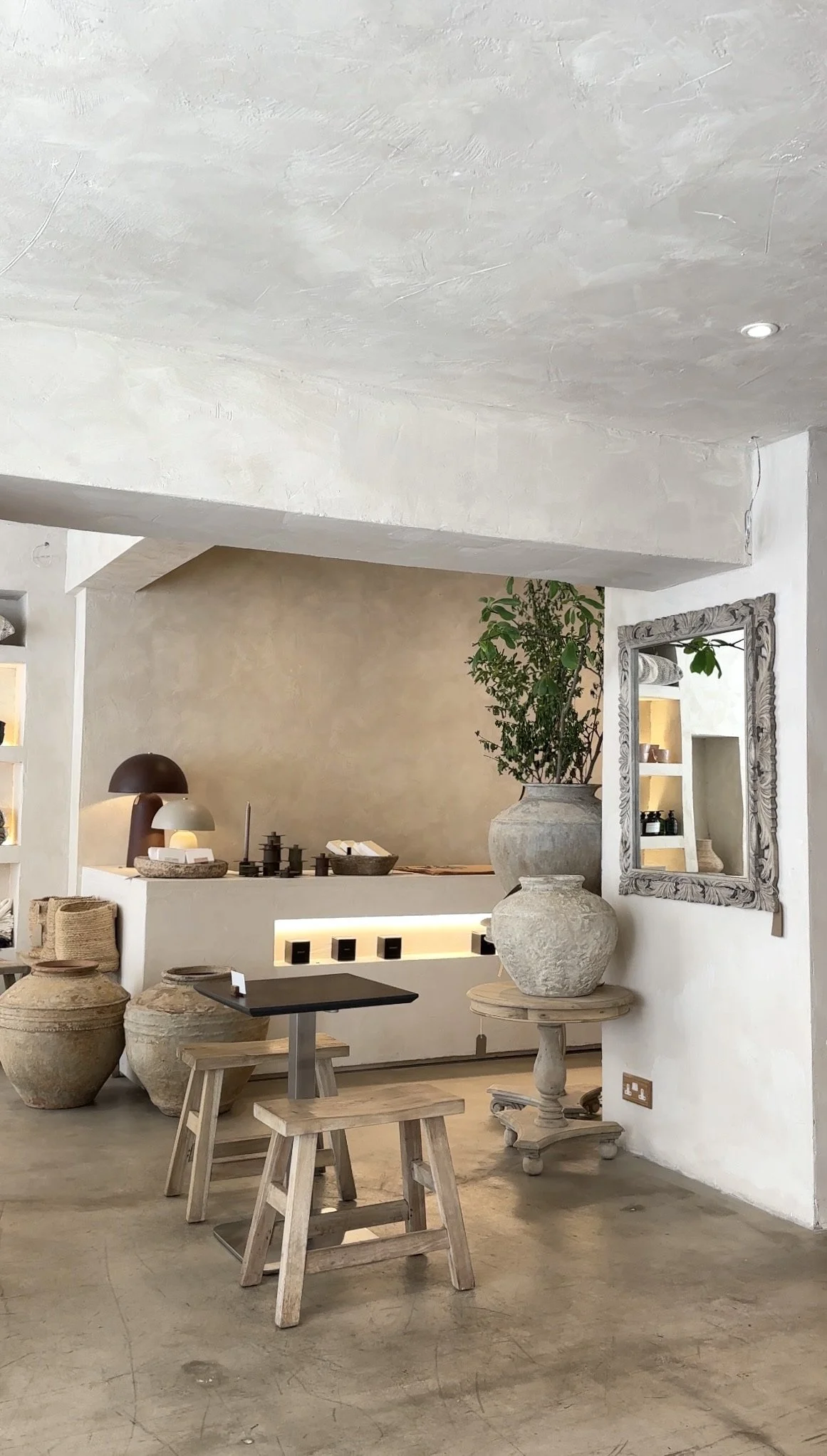Kinfolk: The Quiet Icon That Rewrote the Rules of Living Well
by azulomo | 4 min read
In Praise of the Pause
Kinfolk and the Art of Stillness
In a world that once sprinted toward more—more clicks, more stuff, more noise—Kinfolk stood still.
No shouty headlines. No instant gratification. Just thoughtful words, warm light, and linen-covered stillness. At a time when lifestyle magazines were chasing glossy perfection, Kinfolk stepped off the treadmill and said, “What if less... really is more?”
The result? A global shift in how we think about home, time, beauty, and presence. And here’s the curious thing: it didn’t feel radical. It felt familiar. As if Kinfolk had unearthed something we’d forgotten but deeply missed—a slower rhythm, a softer gaze, a simpler way to be in the world. It offered not just aesthetics, but a kind of emotional exhale.
So what is Kinfolk, really? And how did a humble, minimalist magazine help ignite a worldwide movement of slow living, thoughtful design, and soulful simplicity?
Let’s rewind to where it all began.
Stillness, not silence—that’s the Kinfolk way.
From Portland to the World: The Kinfolk Origin Story
Kinfolk was founded in 2011 in Portland, Oregon, by Nathan Williams, Katie Searle-Williams, Doug Bischoff, and Rhett Dashwood. What started as a niche passion project quickly became the visual and philosophical blueprint for a calmer, more connected life.
Their goal? To create a publication that celebrated small gatherings and intentional living—not in a Pinterest-perfect way, but in a real, quietly beautiful way.
At the time, most lifestyle media was chasing the big, the bold, the aspirational. Kinfolk leaned the other way. It spotlighted:
People over perfection
Craftsmanship over consumerism
Rituals over routines
The early issues were independently published and distributed by hand—literally stacked into suitcases and driven to shops. But the ripple effect was immediate. Readers were craving something slower, deeper, and more grounded.
A Global Movement in Soft Focus
What began as an indie magazine in the Pacific Northwest soon caught fire—in the calmest, most candle-lit way possible.
Within just a few years:
Kinfolk reached over 100,000 readers in 35+ countries.
It was translated into Japanese, Korean, Chinese, and more.
Kinfolk events and gatherings popped up in Copenhagen, Seoul, London, and beyond.
The brand's Instagram following grew to over 1.6 million, becoming a hub for the slow aesthetic (Kinfolk.com).
It published bestselling books like The Kinfolk Table, The Kinfolk Home, and The Kinfolk Entrepreneur—all of which became cult favourites in the world of design, food, and thoughtful business.
But Kinfolk’s success wasn’t about numbers. It was about resonance. Readers didn’t just browse the pages—they sawthemselves in them. Or rather, the version of themselves they longed to become.
What Kinfolk Stands For
Let’s be clear: Kinfolk isn’t just a look—it’s a lens.
A lens that reframes how we:
Furnish our homes
Host our people
Spend our time
See our worth
It’s rooted in Scandinavian and Japanese design principles (think hygge meets wabi-sabi), but its values are universal: slowness, sincerity, and soul.
It promotes:
Neutral tones and natural textures
Sustainable, ethical production
Curated over cluttered
Design that lasts longer than a season
In an era where overconsumption is exhausting our planet and ourselves, Kinfolk offers an antidote. Not austerity. Not pretension. Just presence.
Why Kinfolk Resonated
Kinfolk didn’t rise in a vacuum. Its ascent mirrors deeper shifts in how we live and what we value:
72% of millennials say they’d rather spend on experiences than things (Harris Group).
64% of people say they’re actively looking to slow down and live more mindfully (Pinterest Predicts, 2024).
Interest in “slow living” has grown by +500% on Google Search over the past 5 years.
Minimalist design is one of the top 3 trends influencing vacation rental interiors globally (Booking.com, 2023).
In short, Kinfolk didn't just tap into a moment—it helped define it.
The Kinfolk Effect
Here’s how Kinfolk’s influence now quietly shapes everything from homes to holidays:
Interior design: The rise of warm minimalism, organic textures, and soft neutrals owes much to Kinfolk’s palette and styling.
Vacation rentals & boutique hotels: Properties now seek to emulate the Kinfolk aesthetic—think unpolished wood, woven lighting, soft linen bedding, and considered stillness.
Lifestyle brands: Countless businesses in fashion, homeware, and wellness now align with Kinfolk’s calm, ethical, intentional vibe.
Dining culture: The shared table, the long lunch, the seasonal platter—all hallmarks of Kinfolk’s food philosophy.
—
Kindred Spirits: Kinfolk & azulomo
At azulomo, we tip our sunhat to Kinfolk.
Not because we want to mimic it—but because we recognise its quiet courage. Like Kinfolk, we believe in doing things with care, with calm, and with meaning. Whether it’s designing a coastal retreat or curating a thoughtful guest experience, our approach shares the same heartbeat:
Less rush.
More resonance.
Hosting that feels like home.
A life lived on purpose, not autopilot.
Born in Portland and embraced across the globe, Kinfolk transformed a quiet vision into a cultural ripple. With its timeless aesthetic and intentional ethos, it changed how we gather, create, decorate—and breathe. At azulomo, we carry that torch in our own way: through soulful design, slow hosting, and stories that feel like home.
“Slow living isn’t a trend. It’s a return. A coming home to what matters. If you’ve ever felt drawn to a calmer rhythm, Kinfolk lit a path—and azulomo walks alongside it.”







